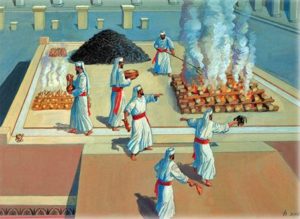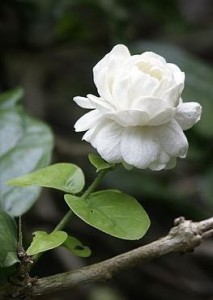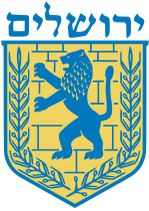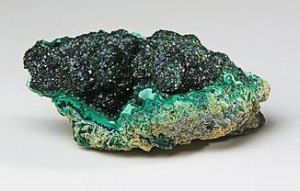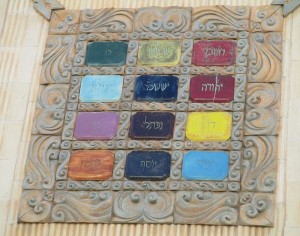
Modern Rendition of the Choshen, the High Priest’s Breastplate
This week’s Torah portion is Tetzave, which focuses on the holy vestments worn by the Kohen Gadol, the High Priest. Perhaps the most enigmatic of these vestments is the choshen hamishpat, the “breastplate of judgement”. This breastplate was embedded with twelve different precious stones, each symbolizing one of the Twelve Tribes. Housed within the breastplate were the Urim v’Tumim, mysterious objects whose nature has been speculated upon for centuries.
The Torah itself does not elaborate on what the Urim and Tumim are. The Talmud (Yoma 21b) states that they were one of the five things that were in the First Temple but missing in the Second Temple. Many believe that these were a couple of stones used to communicate with God. Unseen and unused for some two and a half millennia, it isn’t surprising that the Urim and Tumim are clouded in mystery.
Guilty or Innocent?
Some scholars see urim rooted in the root arur, “cursed”, and tumim from tam, “innocent”. Thus, these stones were used to figure out if a person was guilty or innocent, or if a certain decision was right or wrong. We read in I Samuel 14:36-44 how King Saul debated whether to pursue the Philistines in battle or not, so the High Priest addressed the question to God. God does not respond, so Saul concludes there must be a guilty person among them causing God to turn away. He then separates the people into groups to see which group contains the guilty party. It turns out that it is Saul’s son Jonathan who erred. This passage highlights the use of Urim and Tumim in divine communication, both in finding whether an action is right or wrong, and in determining guilt and innocence.
How did the stones communicate this? The word urim can mean “lights”, so it is thought that the stones glowed: one stone for yes/innocent, and the other for no/guilty. Others hold that the Urim and Tumim gave power to the Breastplate itself, causing the letters engraved upon it to glow. Each of the twelve stones on the Breastplate was engraved with the name of the corresponding tribe. However, the twelve names do not include all twenty-two letters of the Hebrew alphabet! The missing letters—Chet, Tet, Tzadi, Kuf—are in the names of the patriarchs, which were also engraved onto the plate, together with the phrase shivtei yeshurun, “Tribes of Jeshurun”. (Jeshurun was an ancient name for Israel.)
Interestingly, Rabbi Chaim Vital writes that this is how the Arizal could “read” people’s faces, by seeing a sort of Breastplate on their forehead. In Sha’ar Ruach HaKodesh, he explains that each person’s forehead has the twenty-two letters mystically engraved upon it, and the letters glow allowing the adept to penetrate into one’s soul and fortune. Each letter symbolizes different things. If no letters at all are shining, the person is nearing their death!
The Foundation Stone
Meanwhile, Targum Yonatan comments (on Exodus 28:30) that the Urim and Tumim were themselves inscribed with the alphabet, through a mystical name of God—“the name through which He created all three hundred and ten worlds”. Again, the letters would glow in sequence to provide the answer to one’s question. Targum Yonatan appears to suggest that the Urim and Tumim were special stones formed from the great Even HaShetiya, the Foundation Stone. According to tradition, this is the Stone from which Creation began, some seeing it is the very centre of the universe. Targum Yonatan says the Foundation Stone was placed by God to “seal up the mouth of the great deep at the beginning”.
This refers to the account of Creation, where it is stated at the beginning that everything was “chaos and void, with darkness upon the deep” (Genesis 1:2) before God said, “Let there be light.” Looking at these verses carefully, we see that the Torah uses the word tehom for the great deep, before the introduction of light, or. It isn’t difficult to see a connection between or v’tehom and urim v’tumim. The Urim and Tumim are meant to be conduits for communicating with the Divine, while the Foundation Stone has traditionally been seen as the very link between the Heavens and Earth.
Where is this Foundation Stone? The Talmud (Yoma 53b) tells us that the Even Shetiya is precisely the site of the Holy of Holies, the inner sanctum of the Temple, where the High Priest entered just once a year on Yom Kippur. The Stone served as the foundation for the Ark of the Covenant. The Ark, too, was a means of Divine Communication, with a Heavenly Voice emanating from between the Cherubs on the Ark’s Cover. We therefore see a link between the Ark and the Urim v’Tumim. The Talmud tells us that both the Ark and the Urim were missing in the Second Temple, together with the Shekhina and the spirit of prophecy. In short, the Second Temple era was devoid of any real divine communication.
The Dome of the Rock
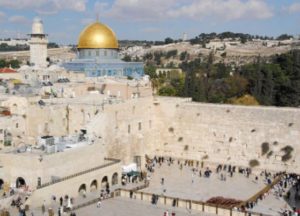
The Dome of the Rock and the Western Wall. Some believe the Temple was located right in front of the Wall, in the forested area pictured above.
So, what stood instead of the Ark in the Holy of Holies of the Second Temple? The Foundation Stone! It protruded “three fingers above the ground” and it is on this Stone that the High Priest would place the burning coals and incense on Yom Kippur (Yoma 53b). It is atop this Stone that the Muslims built the famous gold-topped Dome of the Rock (hence the name).
The Rabbis debate whether the Rock inside the Dome really is the Foundation Stone or not. The Arizal is among those who believed it is not, suggesting instead that the Temple was built right in front of where the Western Wall is today. Meanwhile, the Radbaz and Rav Ovadia of Bartenura maintained that it is indeed the Stone. They are supported by an ancient Midrash which prophesies that the Ishmaelites will do fifteen things in Israel, one of which is building a shrine atop the Holy of Holies (Pirkei d’Rabbi Eliezer, ch. 30). The midrashic passage concludes by presciently saying the Ishmaelites will instigate three great wars at the end: one in Arab lands, one in the Sea, and one in the West. It is in the midst of these wars that Mashiach will come.

A picture from beneath the Rock, the area known as the “Well of Souls”
When that time comes, the Ark of the Covenant—which many believe is currently hidden under the Foundation Stone—will be restored, together with the Priestly Vestments. In light of the fact that we are now quite clearly living out the final verses of that midrashic passage, it seems we shall soon be able to finally unravel the mystery of the Urim v’Tumim.
The above article is adapted from Garments of Light: 70 Illuminating Essays on the Weekly Torah Portion and Holidays. Click here to get the book!


